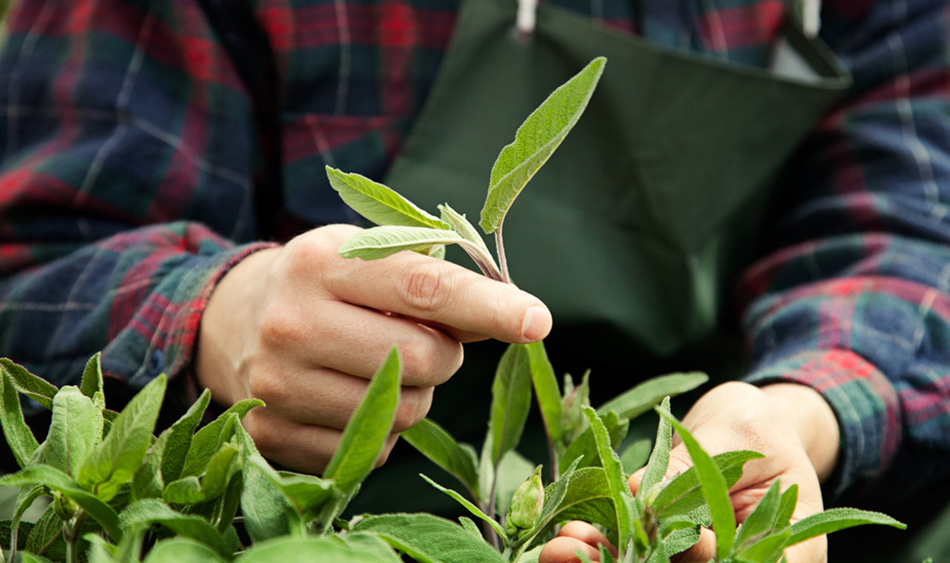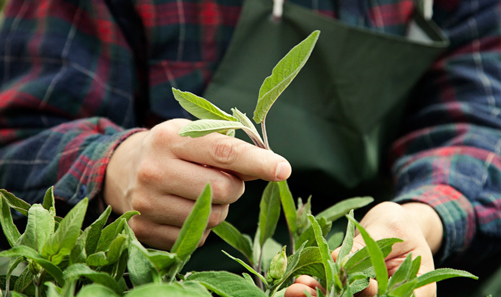It’s almost summer and the sun is starting to shine that little bit warmer. Now that the cold weather is out of the way, we can start to turn our attention to our gardens.
Is your garden looking a little bit tired? Does it need some love and attention? Maybe you want to do something a bit different this year? Well, don’t worry – there are LOTS of sustainable ways to spruce up your garden this summer.
We’ve compiled a list of 15 sustainable gardening ideas to bring your garden to the next level. From completing building projects with recycled materials to encouraging local wildlife, we’ve got something for everyone, whether you’re a gardening beginner or a green-fingered expert. Happy gardening!
15 Green Ideas For A Sustainable Garden
1. Herb gardens & vegetable patches
Growing your own herbs and/or vegetables is a wonderful way to spruce up your garden as it gives you a brand new area to create and explore. There’s little in life more satisfying than preparing a meal with your own home-grown produce. Tomatoes, basil, chives, and zucchini are easy-to-grow plants for gardening beginners.
2. Set up a compost bin
Compost is invaluable for giving your plants that extra helping hand when they’re growing. When installing a compost bin consider creating your own rather than purchasing one. For extra green points, make your bin out of recycled materials such as wooden pallets. Composting is a perfect green way to dispose of household waste such as vegetable peelings and food scraps. You can also put most of your garden waste in there too.
3. Harvest your flower seeds to re-plant
Harvesting the seeds from your garden will save you money as you won’t need to purchase new seeds the following year. When you pull up dead or dying flowers, before putting them on the compost heap, take a moment to collect the seeds. Save them in labeled envelopes so you know what plant they are from and then replant them at the correct time of year to encourage regrowth.
4. Use recycled materials when building
Sometimes sprucing up your garden means a bit of a building project. Consider sourcing second-hand or recycled materials for a more sustainable building project. Old fence posts can be painted and shaped to make them as good as new. Empty, clean wine bottles can make beautiful decorative walls when combined with local stoneware. Consider approaching builders or decorators to see if they have any brickwork or tiles that would otherwise be sent to landfills. Broken tiles or glassware set into concrete makes a stunning pathway or wall.
5. Recycle everyday objects
Many different household objects can be turned into gardening tools or decorations. Here are some examples:
- Use toilet roll holders or other cardboard tubes for growing seedlings
- Use popsicle sticks or corks as plant labels instead of purchasing plastic ones
- Search for objects suitable for growing plants at yard sales or thrift stores – e.g. watering cans, buckets, or garden ornaments/statues
- Create your own ‘treat balls’ for birds out of used coconut shells
- Cleaned milk cartons make great birdhouses. Decorate them with scrapbooking paper or paint to make them beautiful – don’t forget to varnish them protect from the rain
- Use long twigs or old shower rails to help tall plants to grow straight
6. Preserve water
Water is a precious commodity and so much of it goes to waste. Rather than using water from hose pipes or taps, try collecting your own. Rain barrels are so simple to use and can provide enough water for your whole garden! Rain barrels are fairly inexpensive, but you may be able to find a one-second hand on Craigslist or similar if the cost is an issue. They are unfortunately usually made of plastic, but at least this means they will last for many years.
7. Borrow tools rather than buying new
If you need a specialized tool for a particular piece of work but you don’t own one, consider borrowing from friends, family, or neighbors rather than buying new. Not only does this avoid the waste of buying something that you will only use once, but it will save space in your shed as you won’t have to find somewhere to store a new tool.
8. Allow part of your garden to become wild
Consider sectioning off part of your garden and allowing it to grow wild. Not only will this encourage insects and other wildlife to visit (and even make their home in your garden) but having less lawn to mow means you’ll use less fuel or electricity every time you trim the grass.
9. Plant insect-friendly flowers
Encourage insect life to visit your garden by planting flowers and plants that attract them. Bees are essential for pollinating flowers both in gardens and in the countryside but sadly their numbers are declining fast. Hawthorns, hellebores, forget-me-nots, rosemary, and thrift are all loved by bees and other insects such as butterflies.
10. Place birdhouses around your garden
Hang wooden birdhouses around your garden to encourage birds to visit and nest. Nothing spruces up a garden more than watching birds play on your lawn or raise their young in your trees. You could even make your own birdhouses from old pieces of wood. Just make sure there aren’t any sharp edges that they could hurt themselves on.
11. Rotate your crops to protect the soil
Some plants can drain the soil of its natural chemicals. Many people turn to chemical fertilizers to replenish them but this isn’t an ideal solution for the sustainable gardener. Crop rotation is mostly relevant for those with vegetable gardens. The idea of rotating crops is that each year you change the position that you grow each type of vegetable for optimum cultivation and soil recovery. From an aesthetic point of view, it’s nice to see your vegetable garden looking different every year.
12. Use chemical-free weed & pest control
Chemical-based weed killers and pest control products aren’t particularly great for the environment. Chemical-free methods are a much greener way to deal with the problems and they can be just as effective. Going chemical-free is especially important if you are collecting your own water (see Idea 6) as you don’t want to contaminate your supplies. There are lots of different ways to clear weeds and pests from your garden, including:
- Hand-picking weeds from pots and flower beds
- Encouraging hedgehogs and birds to your garden to eat slugs
- Use mild soap solutions sprayed on leaves to remove aphids
- Use pest deterrents such as putting broken eggshells in plant pots (slugs don’t like them)
13. Build your own trellises
Build your own wooden trellises for growing creeper plants such as roses by nailing together old pieces of wood, tree branches, or large twigs. This is a super way to use up old building materials and it also creates a unique feature for your garden.
14. Install a pond to encourage water creatures
Ponds can transform a boring garden into your garden’s own private ecosystem. Water plants such as water lilies are beautiful to look at. Sitting on the edge of a pond with an ice-cold lemonade whilst watching the fish swimming around is a lovely way to enjoy the summer sun. Frogs are great for controlling pests such as slugs too!
15. Small garden? Try vertical gardening
You may not have a garden suitable for installing a pond or looking after a lawn. However, even the smallest gardens can be turned into eco-friendly, sustainable areas through the use of vertical gardening. The basic concept is that you use trellises and built-up plant pots to increase yield from vegetables and to increase the amount of growing space available.
Sustainable gardening: hope for the future
So there you have it, our 15 top ideas for sustainable gardening. By following the practices above, you will do your bit for the planet and help to preserve our nature and wildlife for generations to come.
If you have any sustainable gardening ideas that we haven’t covered, or if you’d like to share your eco-friendly gardening stories with us, please leave a comment using the form below – we’d love to hear from you!

About the Author
James is your friendly neighborhood content writer here at the Green Living Blog. With a passion for all things sustainable, he’s your go-to guru for everything eco-friendly. Armed with a treasure trove of wisdom about sustainable living, recycling, and environmentally conscious practices, James is on a mission. He’s here to make sure you not only protect your family but also keep Mother Earth smiling. 😊🌎 When he’s not busy sharing eco-friendly insights, James can often be found teaching his cat that compost bins make the purr-fect hideaway. 🐱♻️ Join James on his quest to uncover the secrets of defeating wasteful habits while leaving the lightest footprint on our precious planet’s ecosystem.



